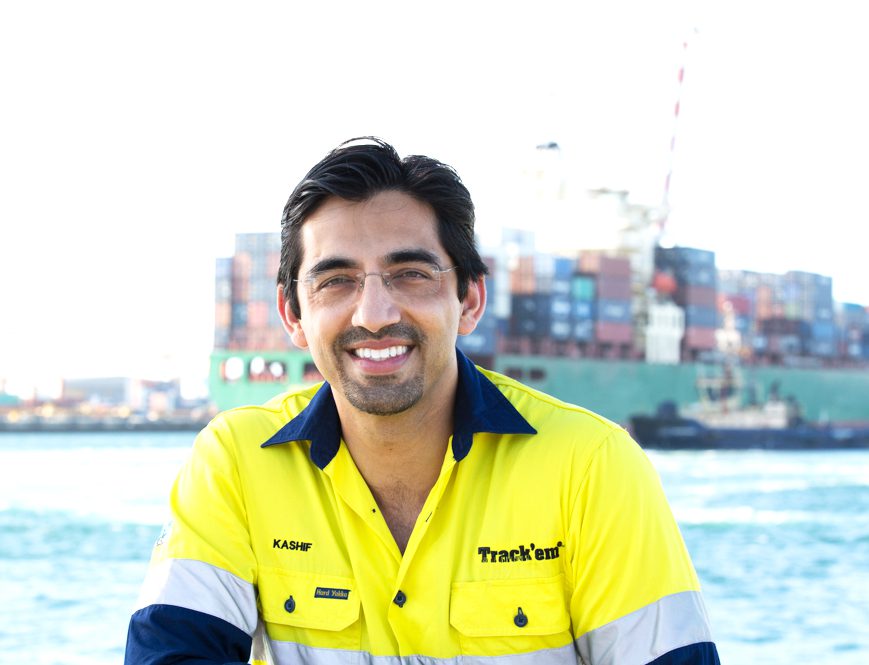Track’em Featured in Mining News and Energy News Bulletin
Track’em media coverage is growing steadily with recent attention from Sky News Business and The Weekend West. Most recently, Track’em was praised in an article written by Noel Dyson in his article ‘Keeping a Track on Value’ both the Energy News Bulletin and Mining News on the 7th February.
You can read the full article below or by clicking on either of the following links :
Energy News Bulletin – Keeping a track on value
Mining News – Keeping a track on value
Keeping a track on value
Friday, 7 February 2014 | Noel Dyson
With productivity the buzzword in the oil and gas industry, here is a tool that might prove to be a vital one.

Kashif Saleem CEO Track’em
Called Track’em, the device simply does that.
Picture this. A crew on an oil and gas project is waiting for a beam to arrive. That beam costs $1000 to fabricate and without it they cannot proceed. But the beam is nowhere to be found.
A chain of phone calls begins, gradually increasing in heat and anatomical specificity until two people are dispatched to track down this errant beam.
While they are doing this the crew of five men and a crane are left standing idle.
Considering each man in the crew costs north of $300 a day and the crane costs about $5000 a day, the delay is getting more costly by the minute. After a day of searching, the two men return empty handed.
Fingers start getting pointed.
The chain stretches back to the fabricator who says the beam was despatched to and received by the site.
More heated phone conversations are held.
In the end the fabricator is told to make another beam and send it and everybody involved in the chain is told to make sure this one makes it to where it has to be.
Sound far-fetched?
According to Track’em CEO Kashif Saleem, this actually happened.
A cruel twist to this tale is that after the project was finished, that troublesome beam turned up.
Saleem’s Track’em is designed to prevent that ever happening.
It involves putting barcodes, radio frequency identification tags or GPS tags onto pieces of equipment that allow them to be tracked.
With advances in technology that has grown to the software including a 3D model plug-in.
This means if there is a 3D model of the project, the tracking can be added to that so a project manager can see at a glance where a particular piece of equipment or consignment of materials is onsite.
“It’s all about helping them finish their project on time,” Saleem said.
Obviously there is some hardware and software work that needs to go behind that but Saleem was also wise enough to realise the need for some change management.
The barcodes are fine in themselves but of little use if they are not scanned.
“One of the project managers said to me that 98% of the time they find the materials,” Saleem said.
“I asked him what happened to the other 2% and he said they didn’t put it into the system.”
To get around this problem Saleem provides clients with material controllers experienced in Track’em.
These people are Saleem staff members who are seconded to the client for six to 12 months.
Their role is to make the Track’em system and, more importantly, train the client’s staff in how to use it.
When Track’em came out in 2006 the company’s focus was very much on the construction sector.
While that still remains a focus it is broadening its offering and starting to move into the operations and maintenance space.
Saleem said the company would soon be launching another module in Track’em that would apply to that space.
“We have the beta version of that coming soon,” he said.
“With Track’em we have the whole history of the modules.”
“All we have to do is go to the next level where we can use that information for operations.”
Besides Track’em, the company’s offerings include Store’em for stores and warehouse management; Time’em, a time and attendance and work pack tracking solution; and Transport’em, which operates in the supply chain and logistics management space.


